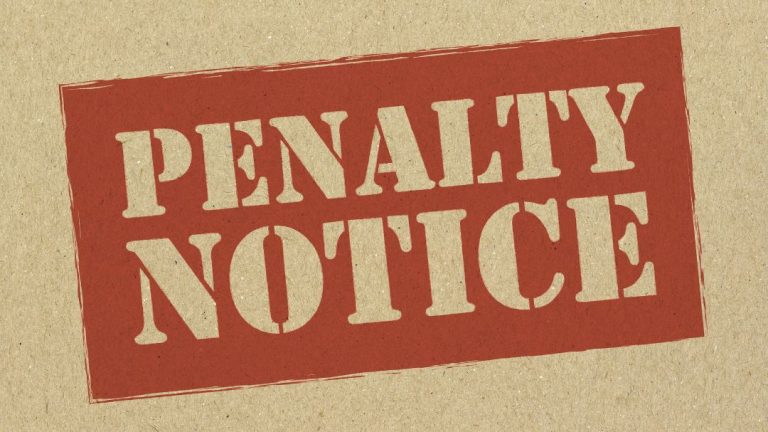Lookback Period vs. Penalty Period in Medicaid

Disclaimer: Since Medicaid rules and insurance regulations are updated regularly, past blog posts may not present the most accurate or relevant data. Please contact our office for up-to-date information, strategies, and guidance.
In order to be eligible for Medicaid, individuals must meet certain financial and health criteria. As a part of the financial requirements, Medicaid applicants must be below a certain asset limit. Many may be tempted to gift away assets in order to fall below the limit but doing so may result in a penalty period that delays their Medicaid eligibility. As you work with clients who are either planning for future care or in the midst of a crisis situation, it’s crucial that you understand these constraints and the ramifications they have for obtaining Medicaid eligibility. The lookback period and penalty period are two significant pieces of the Medicaid landscape, and they go hand in hand. But how do they compare?
What is the Medicaid Lookback Period?
First, let’s explore the lookback period. When an individual applies for Medicaid, one of the financial requirements is an asset limit, which varies by state. The lookback period is designed to prevent applicants from gifting their assets or selling them for a price less than fair market value in order to fall below Medicaid’s asset limit. The lookback period is 60 months, or 5 years, from the date of the Medicaid application. The applicant’s transactions during the lookback period will be reviewed, and any gifts or sales for less than fair market value will be flagged.
If the Medicaid applicant is found to have ineligible transactions during the lookback period, the individual will incur a penalty period preventing them from being eligible at that time. Fortunately, they do not have to wait another 5 years to be Medicaid eligible. That’s where the penalty period comes in.
What is the Medicaid Penalty Period?
When a Medicaid applicant makes a divestment during the lookback period, they sustain a penalty lasting for a certain period that is dependent on the amount that was gifted and the divestment penalty divisor of the state they reside in. The penalty period begins when the applicant is found otherwise eligible for Medicaid benefits. To determine the Medicaid penalty period, the divestment dollar amount is divided by the state’s divestment penalty divisor. The result is the penalty period. At the end of the period, the applicant will become eligible for Medicaid provided they still meet the other financial and health requirements.
For example, take a Medicaid applicant residing in Louisiana, where the divestment penalty divisor is $5,000 per month. The applicant made divestments totaling $25,000 during the lookback period. Taking the $25,000 divestment divided by the penalty divisor of $5,000, the applicant has incurred a 5-month penalty period. The applicant will then begin receiving Medicaid benefits after the 5-month penalty period has concluded.
Exceptions to the Medicaid Divestment Rules
It’s important to note that not all gifts during the lookback period result in a Medicaid penalty period. Exceptions include:
- A gift to the spouse
- A gift to or trust created for a blind or disabled child
- A transfer of home ownership to a child who lived with and was the caregiver for the individual for at least 2 years prior to them entering a nursing home
- A transfer of the home to a sibling who has ownership in the home and resided there for at least 1 year prior to them residing in a nursing home
It’s also worth reiterating that a gift or sale below fair market value that took place more than 5 years before the Medicaid application would not result in a penalty.
How to Avoid a Medicaid Penalty Period
The best way for your clients to avoid incurring a Medicaid penalty period is to refrain from gifting any of their assets within 5 years of applying for Medicaid. They should also keep detailed records of any transactions that take place, especially if they’re within the Medicaid rules. That way, they will be able to prove they did not make any divestments during the lookback period.
Many Medicaid applicants make gifts because they want to provide an inheritance for their loved ones rather than depleting all their assets on nursing home costs. We get it! Fortunately, they have another option—a Medicaid Compliant Annuity. Your clients can use this powerful tool to preserve their assets while also avoiding a lengthy penalty period.
What is a Medicaid Compliant Annuity?
At Krause Financial, we specialize in several products and services related to the crisis Medicaid planning process, including our bread and butter—the Medicaid Compliant Annuity (MCA). In addition to being Medicaid compliant, MCAs allow elderly individuals who are facing the nursing home to preserve their assets without depleting them on nursing home care costs. Although some of our MCA strategies use a Medicaid penalty period to the applicant’s advantage, the MCA ultimately allows your clients to safeguard more of their assets than would be possible without it.
To learn more about the Medicaid lookback period, penalty period, or how you can help your clients with a Medicaid Compliant Annuity, we invite you to contact our team at Krause Financial.



